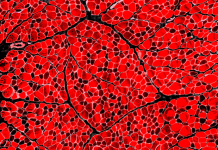
Using sophisticated RNA sequencing technology, biomedical researchers can measure the activity of our genes across millions of single cells, creating detailed maps of tissues, organs, and diseases. Analyzing these datasets requires a rare combination of skills: deep understanding of the biology, and the ability to develop computer code that turns data into insights. What if we could equip biomedical researchers with an AI assistant that sees the data, supports the analysis, knows about the biology, and is easy to talk to? This could give scientists a virtual, AI-based colleague with both biological and bioinformatics expertise to support them in their research.
Toward this goal, researchers led by Christoph Bock, Principal Investigator at the CeMM Research Center for Molecular Medicine of the Austrian Academy of Sciences and Professor at the Medical University of Vienna, have developed CellWhisperer. CellWhisperer is an AI method and software tool that links gene expression with descriptive text across more than a million biological samples. It provides an AI chat box to investigate complex biology in English language, unburdened by the complexities of computer code. This study, published in Nature Biotechnology, demonstrates how AI creates a new way for scientists to interact with their data when studying the biological foundations of diseases.
From genes to text – and vice versa
CellWhisperer uses multimodal deep learning on gene activity profiles and matched biological text, which the authors curated from public databases with the help of AI models. Combining these two data modalities, it becomes possible to search massive datasets with text-based queries such as “Show me immune cells from the inflamed colon of patients with autoimmune diseases”.
The CellWhisperer multimodal AI further integrates a large language model that was trained to emulate discussions between biologists and bioinformaticians when analysing data. Chatting with CellWhisperer thus sounds a bit like talking to a bioinformatics colleague, relying on CellWhisperer’s view of the biological data and the biological knowledge of the large language model. For example, users can ask CellWhisperer about genes that are active in cells of interest, and let the model comment on potential biological implications. CellWhisperer is built into a user-friendly web frontend based on the popular CELLxGENE browser and freely accessible online: https://cellwhisperer.bocklab.org.
“By training on experimental data of 20,000 studies from the last two decades, CellWhisperer learned about the biological roles of genes and cells,” explains co-first author Moritz Schaefer, a former Postdoctoral Researcher in Christoph Bock’s research group at CeMM and now at Stanford University. “This way, CellWhisperer is prepared to analyse new single-cell RNA sequencing data from many areas, making biomedical data exploration easier and more exciting.”
A step toward AI research agents
To illustrate CellWhisperer’s potential for biological discovery, the team applied it to single-cell RNA sequencing data of human embryonic development. With basic queries such as “heart” or “brain”, the model identified developmental time points, cell populations, and marker genes associated with human organ formation. Many of these markers matched known developmental genes, while others pointed to previously overlooked candidates.
CellWhisperer is not just making biomedical research easier, it helps me understand what is going on in the cells that I am studying.”
Peter Peneder, co-first author, St. Anna Children’s Cancer Research Institute
“Science is teamwork, and with CellWhisperer, an AI research assistant has joined our team. CellWhisperer really helps with exploratory research – getting a first impression of a new dataset and figuring out where to dig deeper. It supports and empowers us as human scientists,” emphasizes Christoph Bock.
Schaefer, M., et al. (2025). Multimodal learning enables chat-based exploration of single-cell data. Nature Biotechnology. doi: 10.1038/s41587-025-02857-9. https://www.nature.com/articles/s41587-025-02857-9













